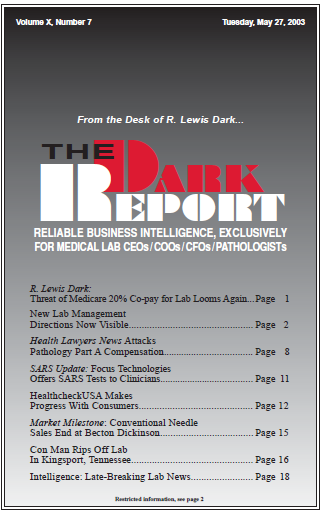CEO SUMMARY: Seat-of-the-pants laboratory management is on its way out, replaced by numbers-driven methods. Judging by the presentations given at this year’s Executive War College on Lab and Pathology Management, a growing number of laboratory administrators and pathologists are actively introducing quality management methods into their laboratory operations and generating remarkable results. IF THERE WAS …
New Lab Management Directions Now Visible Read More »
To access this post, you must purchase The Dark Report.


